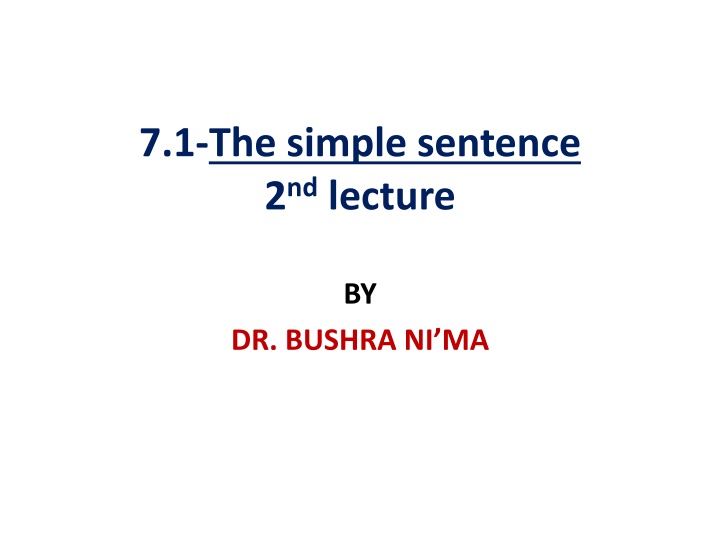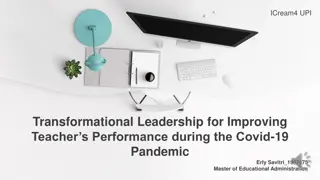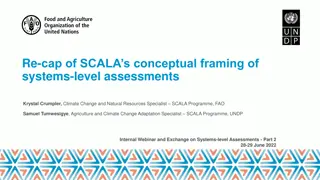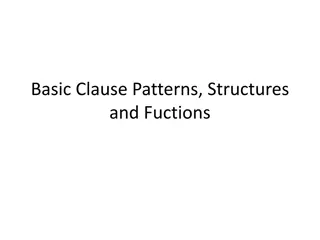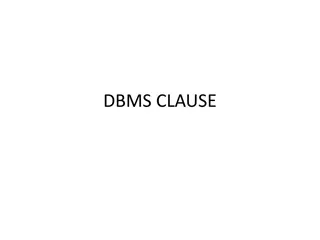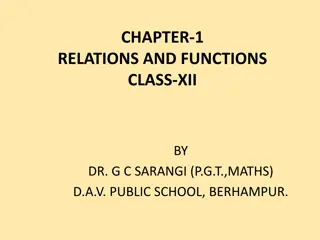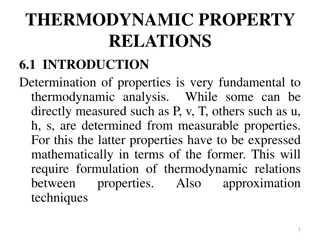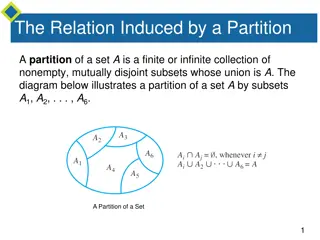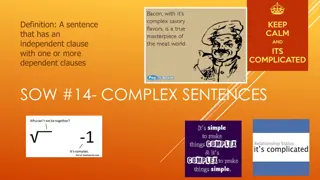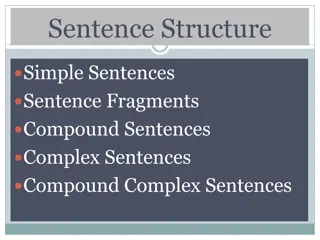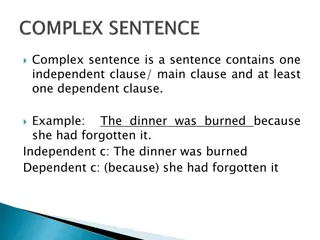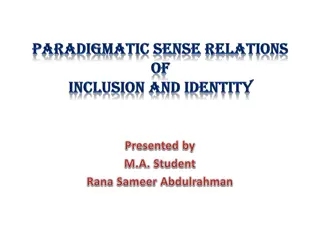Transformational Relations in Clause Types
Clauses with noun phrases as objects can be converted into passive clauses, where the object noun phrase takes on the subject role. This shift is known as transformational relations, emphasizing results over actions. Examples and explanations illustrate how passive voice and copulas play a role in sentence structures.
Download Presentation

Please find below an Image/Link to download the presentation.
The content on the website is provided AS IS for your information and personal use only. It may not be sold, licensed, or shared on other websites without obtaining consent from the author.If you encounter any issues during the download, it is possible that the publisher has removed the file from their server.
You are allowed to download the files provided on this website for personal or commercial use, subject to the condition that they are used lawfully. All files are the property of their respective owners.
The content on the website is provided AS IS for your information and personal use only. It may not be sold, licensed, or shared on other websites without obtaining consent from the author.
E N D
Presentation Transcript
7.1-The simple sentence 2ndlecture BY DR. BUSHRA NI MA
7.5-Transformational relations: If we want to distinguish the various clause types we do that "transformational relations" or "relations of grammatical paraphrase". by means of
Clauses containing a noun phrase as object are distinguished by their ability to be converted into passive clauses, the object noun phrase assuming the function of the subject (V pass=passive verb phrase), appearing in an optional symbolized here as [A]: Many students attended the lecture. S+V+Od ~ The lecture was attended by many students. S+V pass+[A] the by subject phrase,
~ The lecture was attended by many students. S+Vpass+[A] *(The passive draws more attention to the result than to the action or agency) John has accused his neighbour of theft. S V Od prepositional phrase=Co ~ John's neighbour has been accused of theft. S V preposition phrase=Cs
Last night, Ralph invited us and Brown's to Christmas Eve celebration. A time S V prepositional phrase=A time ~ Last night, we and Brown's were invited to Christmas Eve celebration. A time S Od V A time Q. Give the clause type of this sentence?
The walls were painted bright pink. (passive sentence, so we must change it to active) ~ The painter painted the walls bright pink. S V The clause type is ( SVOdCo) * The passive draws more attention to the result than to the action or agency, the 'resulting' copula get frequently replaces be, though chiefly in rather informal usage Od Co
The window was broken by my younger son. I know how the window got broken. (copula: a type of a verb that connects the S. of a sentence to its Co.) Sometimes, "become" can be used instead of "be" to achieve the "result". With the passage of time, the furniture became covered in dust. Examples:
1) George's father greeted the headmaster. 2) The headmaster put George into the second class. 3) The police laid the bodies by the side of the road. 4) He convinced us of his innocence. 5) I always regarded him as innocent. 6) My father gave me a good advice.
*Also transformational relations are used to recognize the Od from the Oi one, we put a preposition before the Oi: e.g Can I play you a game of chess? Oi ~ Can I play a game of chess with you? Od e.g I have left you some soup on the stove. Oi Od prep. Oi Od
~ I have left some soup on the stove for you. Od prep. Oi Note: There is sometimes equivalence between types SV, SVC, and SVA, as in: SV SVCs The baby is sleeping The baby is a sleep Two loaves will suffice Two loaves will be sufficient
SV SVA He hurried He went fast SVCs SVA He is jobless He is without job 7.6 Intensive relationship: An (SVOC) clause is often equivalent to a clause with an infinitive or that clause. I imagined her beautiful { I imagined her to be beautiful; I imagined that she was beautiful}
This equivalence shows that the O and the C of an SVOC clause are the same relation to one another as the S and C of an SVC, and the relation is expressed by an intensive verb. * Furthermore: SVOO clauses can be transformed into SVOA clauses (by the substitution of a prepositional phrase for the indirect object, with change of order). Examples:
She sent Jim(Od) a card. (SVOO) She sent a card to Jim. She left Jim(Od) a card. (SVOO) She left a card for Jim. * To and For, in their recipient senses, are the preposition involved, but other, such as 'with' and 'of', are also found. I'll play you a game of chess I'll play a game of chess with|against you. She asked Jim a favour She asked a favour of Jim
7.7 Multiple class membership of verbs: It is important to know that one verb can belong to a different clauses, and hence (thus) enter into a number of different clause types. The verb get is a particularly versatile(multi) one: 1. SVC : He's getting angry. 2. SVA : He got through the window. 3. SVO : He'll get a surprise. 4. SVOC : He got his shoes and socks wet.
5. SVOA : He got himself into trouble. 6. SVOO : He got her a splendid present. * Through the multiple class membership of verbs, ambiguities can arise: 1-She made a good model. SVO or SVC 2-I found her an entertaining partner. SVOC or SVOO 3- He is cooking his family dinner. SVO or SVOO
THANK YOU FOR YOUR ATTENTION
